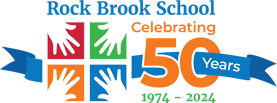You’ve got the communication boards, picture symbols and/or voice output device, but how do you put all of it into action? Here are some helpful strategies:
- Once your child has learned to communicate using a symbol, require that s/he continue to use that symbol during each communicative attempt for that particular idea.
- Sabotage situations through controlling and manipulating the environment so as to increase opportunities for communication (e.g., keep highly preferred items out of reach, give a fork to eat soup with, hide a broken toy with others and encourage your child to comment about it).
- Teach, model, and encourage use of communication symbols during real-life, meaningful activities. Pick specific activities or times of the day to incorporate communication practice into your daily life (e.g., Involve your child in snack prep where s/he has to request items or tell you what ingredient goes in next and what action needs to take place (i.e., pour the milk, scoop the flour, stir the mix).
- Prior to engaging in a new activity, review vocabulary that will be used on the communication board/device pointing to each symbol while you talk about its meaning.
- Create scripts for the communicative exchange. For example, when planning a bubble blowing activity, you may have a bubbles activity page where there are the pronouns (you, I, it), actions (blow, catch, pop, wipe), more again, all done, descriptive words (up, down, high, low, big, little) to direct and describe. You may say, “blow bubbles” while you point to the symbols for “blow” and “bubbles”. Next you could say, “blow, bubbles, up” while pointing to those symbols.
- Notice what your child is trying to communicate, interpret his/her actions into words, and add to what s/he is saying both verbally and by using the AAC system.
- Most importantly, do not dismiss or ignore gestures and vocalizations. ALL communication is important. Children can still be re-directed to use their device after the initial communication is validated.
